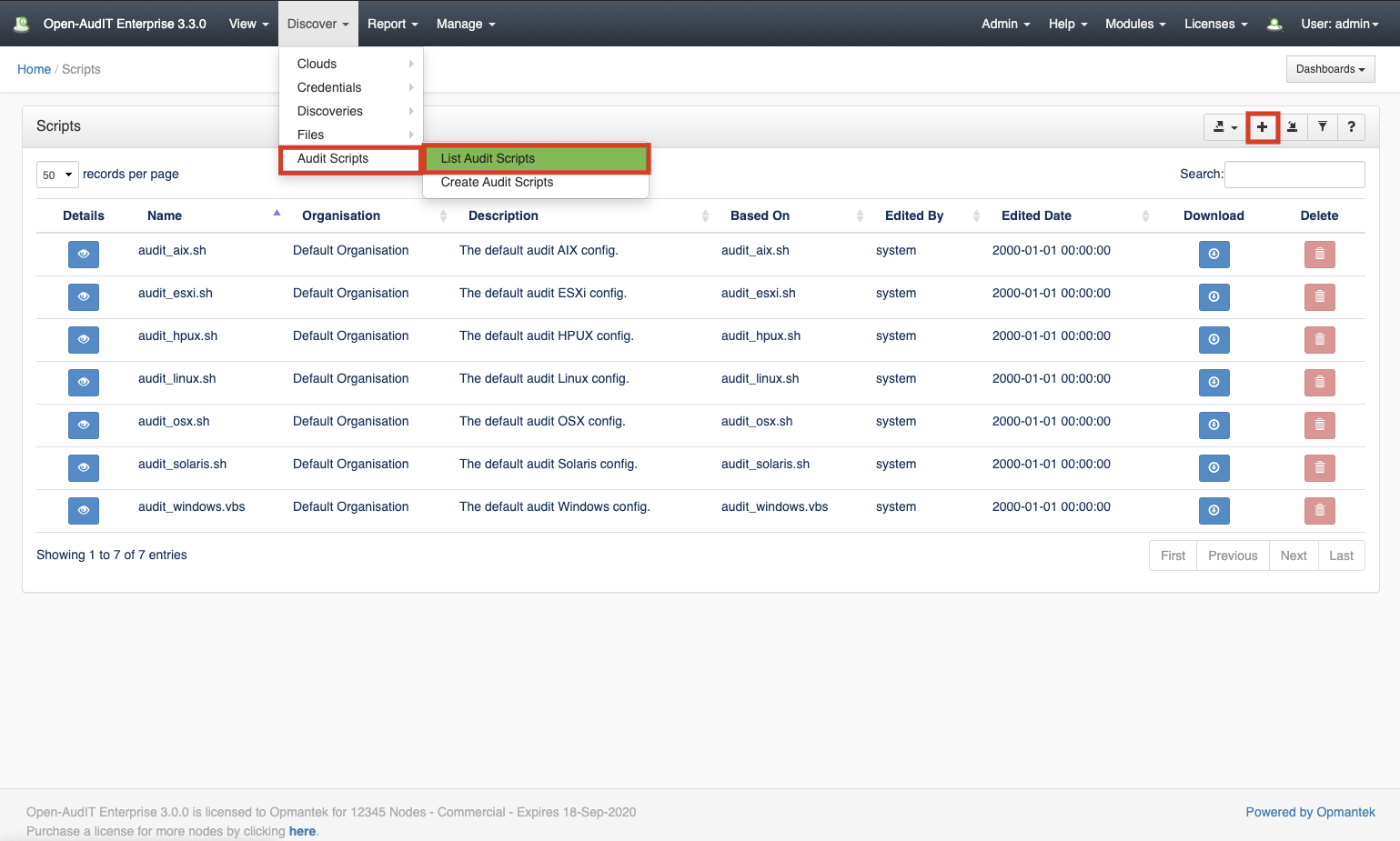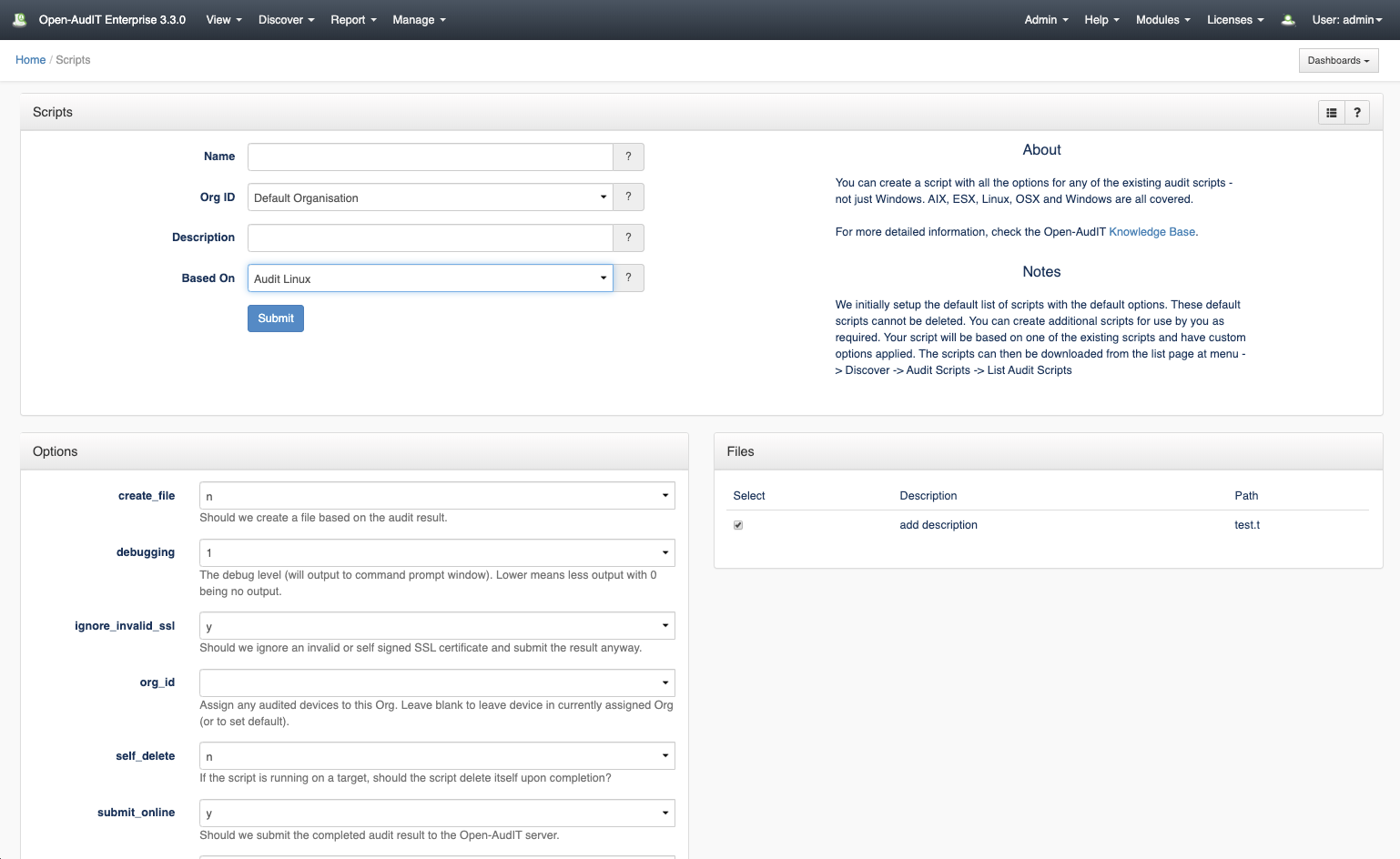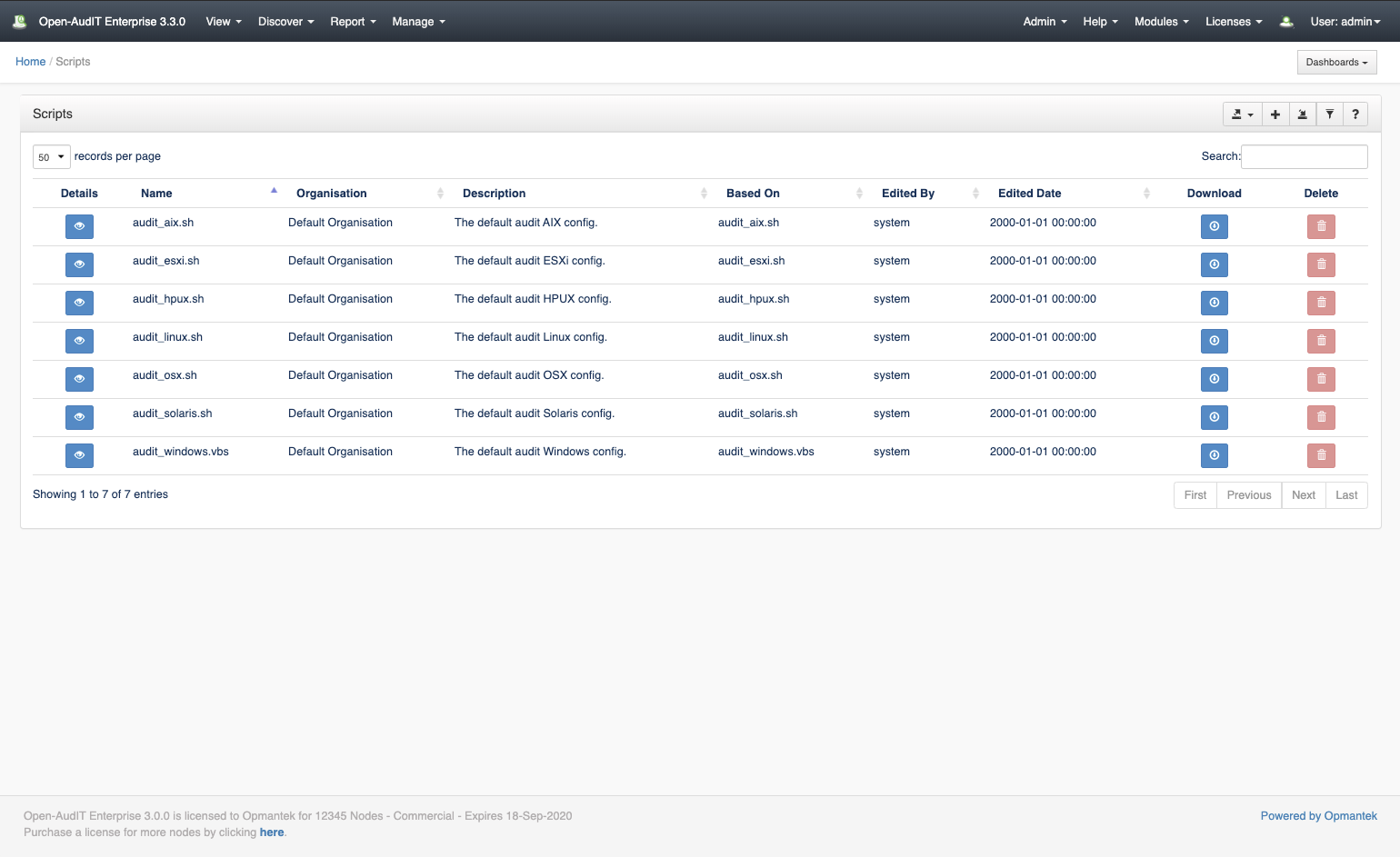Introduction
You can create a script with all the options for any of the existing audit scripts - not just Windows. AIX, ESX, Linux, OSX and Windows are all covered.
How Does it Work?
We initially setup the default list of scripts with the default options. The list of script is viewable at /scripts. These default scripts cannot be deleted. You can create additional scripts for use by you as required. Your script will be based on one of the existing scripts and have custom options applied. The scripts can then be downloaded from the list page at menu: Discover -> Audit Scripts -> List Audit Scripts.
Modifying an Existing Script
You are always free to modify the audit scripts themselves to suit your specific requirements. You will need to (re)incorporate those changes whenever you upgrade as they will be overwritten by the default scripts. I would suggest saving a master copy of your modified script, upgrading Open-AudIT, then running a diff between the new default script and your modified script and applying the differences. The audit scripts are native scripts (Windows is VBScript, all others are Bash). Simple and easy to modify - just make sure to have a copy of your changes before you upgrade.
Debugging a Script
So a script isn't working on a recalcitrant device. Grrr. The scripts for Windows, Linux, and MacOS all accept the debugging argument. This can be set in the script itself, or provided on the command line. Run the script using that option set to 5 and you should see in which section of the script the failure occurs. For example -
./audit_linux.sh debugging=5 submit_online=n create_file=y
Or
cscript audit_windows.vbs debugging=5 submit_online=n create_file=y
And if you can't determine why it's failing, log a support ticket - we'll help
Creating a Script
To make another script use the menu and go to menu: Discover -> Audit Scripts -> Create Audit Scripts. Provide a name and optionally a description. Choose a type of script to base your custom script upon. Once you do this, the Options section will populate with the available configurable options. At present Windows and Linux scripts will have the "files" details injected. See details about files here - Files.
NAME - You should name your script with the correct extension. This is the name that will be provided when you download the script. It is best to not have any spaces in the name (I use underscores). IE - For Windows a name such as my_audit.vbs would be be appropriate. For any others, something.sh (ending in .sh) is advisable.
URL - If you leave the URL option as set, Open-AudIT will inject the config value for default_network_address into the URL option. With the default scripts, if left as set, Open-AudIT will inject the default network address when the script is downloaded.
Viewing Script Details
Go to menu: Discover -> Audit Scripts -> List Audit Scripts.
Database Schema
The database schema can be found in the application is the user has database::read permission by going to menu: Admin -> Database -> List Tables, then clicking on the details button for the table.
API / Web Access
You can access the collection using the normal Open-AudIT JSON based API. Just like any other collection. Please see The Open-AudIT API documentation for further details.
Default Items
Shipped are a set of default items. These can be found by going to menu: Help → Defaults → Scripts.


